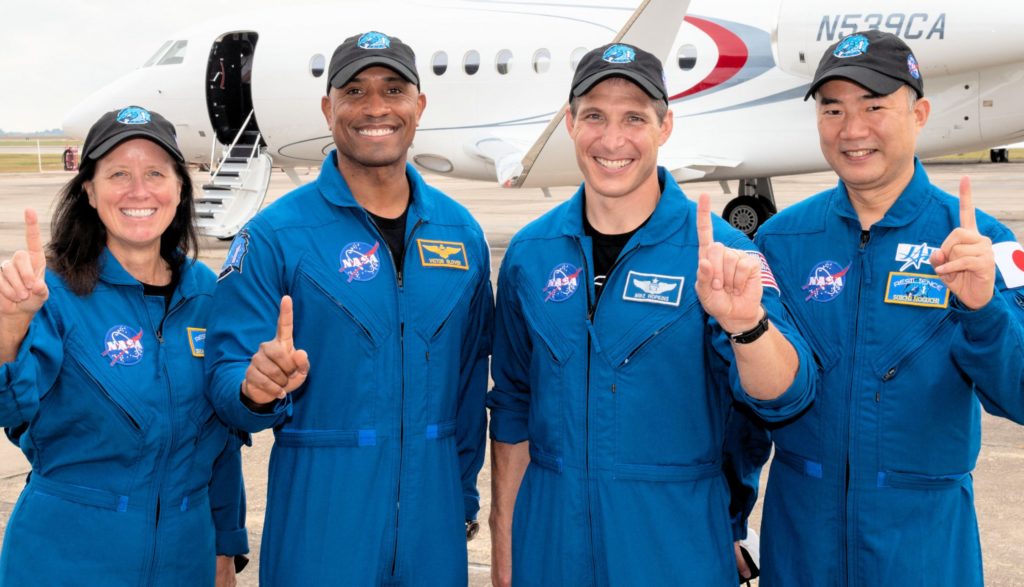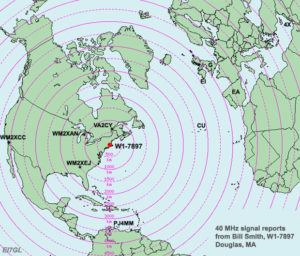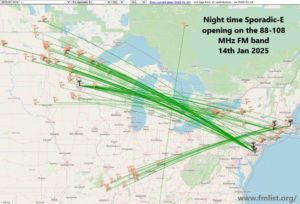SpaceX Dragon Capsule Resilience Ferries Four Radio Amateurs to the ISS

SpaceX Dragon capsule Resilience, carrying four radio amateurs, autonomously docked on November 17 at 0401 UTC with the International Space Station (ISS). A SpaceX Falcon 9 launcher carrying the precious payload went into space on Sunday, November 15, from NASA’s Kennedy Space Center. They comprise the ISS Expedition 64/65 crew.
“Well, the ISS is loaded with hams now,” Amateur Radio on the International Space Station (ARISS) US Delegate for ARRL Rosalie White, K1STO, said on Tuesday. “These four arrived very early this morning Eastern Time: NASA astronauts Victor Glover, KI5BKC; Mike Hopkins, KF5LJG, and Shannon Walker, KD5DXB, as well as Japan Aerospace Exploration Agency (JAXA) astronaut Soichi Noguchi, KD5TVP.” This marks Glover’s first time in space. The others all are ISS veterans.
Earlier this year, NASA ISS Ham Project Coordinator Kenneth Ransom, N5VHO, held amateur radio licensing study sessions for Glover, who passed the Technician exam on August 20.
The four will remain on station until next spring. They joined Expedition 64 Commander Sergey Ryzhikov and Flight Engineer Sergey Kud-Sverchkov of the Russian space agency Roscosmos, on the ISS.
White said all but Noguchi likely will take part in ARISS contacts with schools. White said the first school contact is tentatively scheduled for December 4 with Tecumseh High School in Oklahoma, home of the Tecumseh High School Amateur Radio Club, K5THS. She said the students have earned their ham licenses, and the club has built an antenna and is learning about satellites and circuits.
The Sunday launch from Kennedy Space Center marked only the second crewed-flight for the SpaceX Crew Dragon, which became the first commercial vehicle to put humans into orbit when astronauts Doug Hurley and Bob Behnken, KE5GGX, launched in May, and NASA gave SpaceX the go for future such launches.
“The return of human spaceflight to the United States with one of the safest, most advanced systems ever built is a turning point for America’s future space exploration,” SpaceX claimed, “and it lays the groundwork for missions to the moon, Mars, and beyond.”
If you have found a spelling error, please, notify us by selecting that text and pressing Ctrl+Enter.







